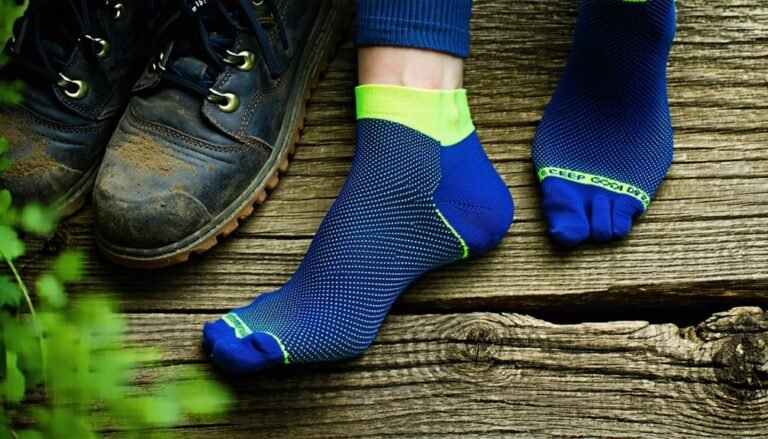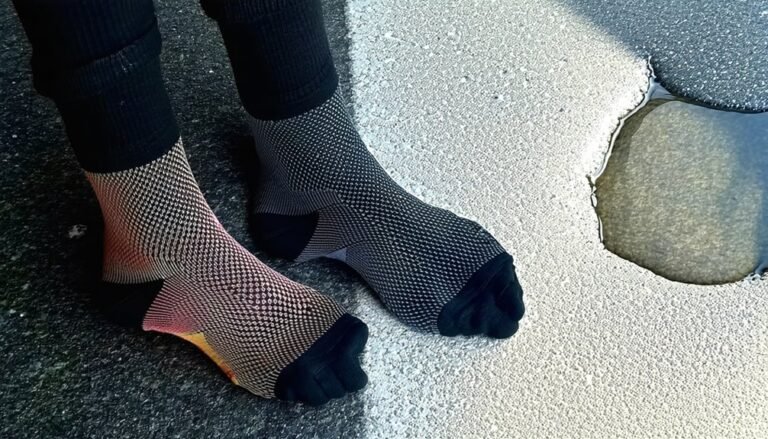How to Get Out a Stripped Seat Bolt Socke
To remove a stripped seat bolt socket, start by applying penetrating oil to loosen any rust. Use a rubber band or duct tape for added grip, then try turning it with pliers or a bolt extractor. If it's still stuck, carefully heat the bolt to expand the metal. For stubborn bolts, left-handed drill bits can help grip while drilling counter-clockwise. Proper techniques and tools are essential, and more methods are available for persistent cases.
Understanding Stripped Seat Bolt Sockets
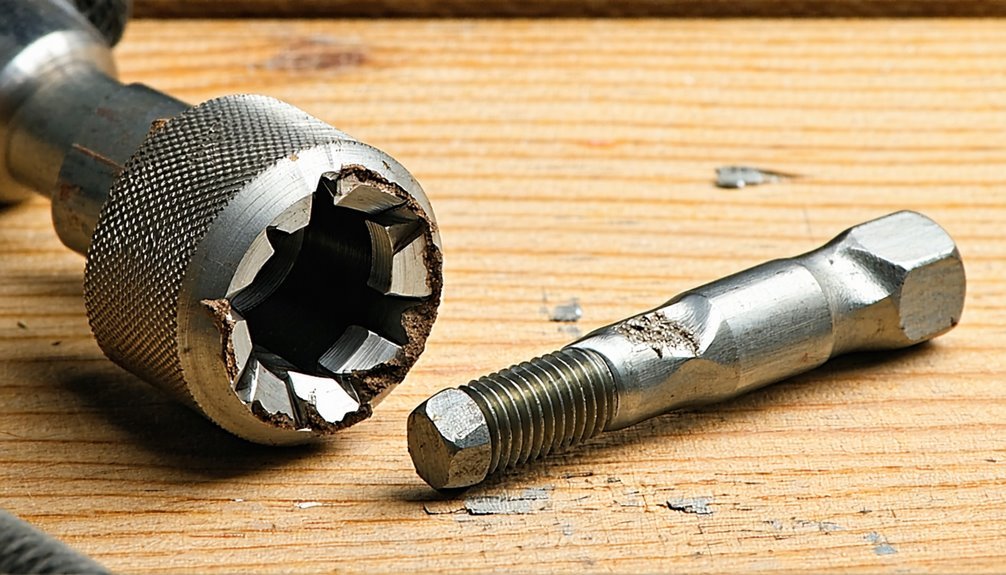
When you're dealing with stripped seat bolt sockets, it's vital to understand what that means for your project. Stripped threads can compromise the integrity of your assembly, leading to potential safety hazards. When the threads of a bolt or socket become damaged, it affects the bolt's ability to secure components effectively. Regular bolt maintenance is important to prevent such issues; inspect bolts for wear and replace them as necessary. If you encounter a stripped socket, avoid using excessive force, as this can worsen the damage. Instead, consider using a thread repair kit or professional assistance to guarantee the repair is done safely and effectively. Taking these steps can minimize risks and keep your project on track.
Common Causes of Stripped Bolts
Stripped bolts can originate from several common issues, which often stem from improper installation or maintenance practices. One major cause is over-torquing, which can damage the threads of both the bolt and the socket. Using incompatible or low-quality common materials can also lead to failures, as they may not withstand the required stress. Additionally, neglecting regular maintenance can result in rust and corrosion, weakening the bolt structure. To prevent these issues, follow essential maintenance tips like using the correct torque specifications and regularly inspecting components for wear. Always choose high-quality materials that suit your application, and guarantee proper installation techniques to maintain bolt integrity and promote safety in your projects.
Tools You'll Need for the Job
To successfully remove a stripped seat bolt socket, you'll need specific hand tools and safety equipment. Having the right tools at hand not only makes the job easier but also guarantees your safety throughout the process. Let's go over the essential items you should gather before starting.
Essential Hand Tools
Having the right tools on hand is vital for successfully removing a stripped seat bolt socket. First, you'll need a set of pliers for gripping and twisting the bolt. A ratchet wrench with the appropriate socket size is important for applying torque without slippage. Additionally, a bolt extractor set can help you remove stubborn bolts. Don't forget a hammer, which can assist in loosening tight connections. Finally, keep your essential toolkits organized and guarantee proper hand tool maintenance to extend their lifespan and effectiveness. Regularly inspect your tools for wear and tear, as this can directly impact your safety and efficiency during the job. Being prepared will make this task much smoother.
Safety Equipment Needed
When tackling the challenge of removing a stripped seat bolt socket, prioritizing safety equipment is essential. Start by wearing safety goggles to protect your eyes from metal shards or debris that might fly off during the extraction process. These goggles should meet appropriate safety standards to guarantee maximum protection. Next, don't forget to use protective gloves; they'll shield your hands from sharp edges and potential injuries. Choose gloves made from durable materials that offer a good grip, allowing you to maintain control of your tools. Finally, consider wearing a dust mask if you're working in an area with dust or fumes. By equipping yourself with the right safety gear, you'll minimize risks and focus on the task at hand efficiently.
Assessing the Damage
Evaluating the damage of a stripped seat bolt socket is essential for determining the best course of action. Start with a thorough visual inspection of the socket and surrounding area. Look for signs of wear, corrosion, or misalignment that could indicate further issues. Check the threaded portion of the bolt for any deformation or breakage, as this will impact your approach. A damage assessment can also involve testing the fit of a wrench to gauge how stripped the socket is. If the socket feels loose or shows significant wear, it may require more invasive techniques for removal. Always prioritize safety during this evaluation, ensuring that surrounding components are secure and that you're wearing appropriate protective gear.
Techniques for Removing Stripped Bolts
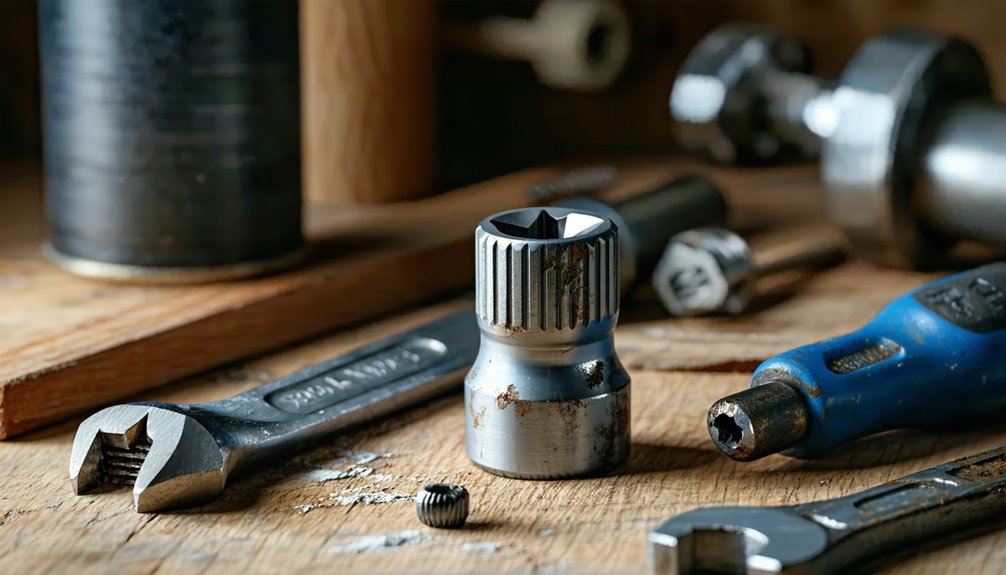
Removing a stripped seat bolt socket can be challenging, but several techniques can help you tackle the problem effectively. First, try using a rubber band or duct tape. Place it over the stripped bolt head, then use a socket wrench for extra grip. If that doesn't work, consider applying penetrating oil to loosen corrosion. Heat can also be beneficial; carefully heat the bolt to expand the metal, making it easier to remove. For stripped bolt prevention in the future, guarantee you're using the correct tools and torque specifications. If you still face issues, don't hesitate to explore more advanced extraction techniques, like using a left-handed drill bit, which can often catch and remove stubborn bolts.
Using Bolt Extractors Effectively
When using bolt extractors, it's essential to understand the different types available and their specific applications. You should also be aware of proper extraction techniques to guarantee success without damaging surrounding components. Always prioritize safety precautions to protect yourself and your workspace during the extraction process.
Types of Bolt Extractors
Bolt extractors come in various types, each designed to tackle specific stripping scenarios effectively. Understanding these extractor types and their materials is essential for safe and efficient extraction.
- Spiral Extractors: These are often made from high-carbon steel, featuring a spiral design that grips the stripped bolt as you turn it counterclockwise.
- Socket Extractors: Typically crafted from hardened steel, these fit over the bolt head and use internal ridges to grip onto damaged surfaces securely.
- Easy Outs: Made from durable materials, they are tapered and designed to bite into the stripped area, allowing you to remove the bolt with a wrench.
Choosing the right extractor type and material will enhance your effectiveness and safety during the extraction process.
Proper Extraction Techniques
Effectively extracting a stripped seat bolt requires a methodical approach to guarantee success without causing further damage. Start by choosing the right socket; a bolt extractor socket designed for stripped bolts will provide a better grip. Ascertain it fits snugly over the damaged bolt to maximize torque.
Once you've selected the appropriate socket, apply steady pressure while turning counterclockwise. If the bolt doesn't budge, consider using penetrating oil to loosen any rust or debris. Remember to follow these extraction tips: maintain a straight angle to avoid slipping and use a breaker bar if necessary for added leverage.
Safety Precautions Required
Using the right extraction techniques is important, but safety precautions can't be overlooked. When working with bolt extractors, make sure you're equipped with the proper safety gear to minimize risk. Here are three essential items for personal protection:
- Safety Glasses: Protect your eyes from metal shavings and debris that may fly during the extraction process.
- Gloves: Wear durable gloves to shield your hands from sharp edges and potential injuries while handling tools.
- Steel-Toed Boots: These can prevent foot injuries in case heavy tools or components fall.
Alternative Methods for Stubborn Bolts
When faced with a stubborn seat bolt, you might find that traditional methods fall short. In such cases, alternative removal techniques can be your best bet. Here are some effective stubborn bolt solutions:
| Method | Description | Safety Considerations |
|---|---|---|
| Heat Application | Use a heat source to expand the bolt. | Guarantee proper ventilation and avoid flammable materials. |
| Impact Tools | Utilize a hammer or impact wrench. | Wear safety goggles and gloves. |
| Penetrating Oil | Apply oil to loosen rust or debris. | Avoid skin contact and inhalation. |
| Bolt Extractors | Use specialized tools for removal. | Follow tool instructions carefully. |
| Left-Handed Drills | Drill counter-clockwise to grip. | Secure the workpiece and wear protective gear. |
These methods can enhance your chances of successfully removing that stubborn bolt.
Preventing Future Stripping Issues
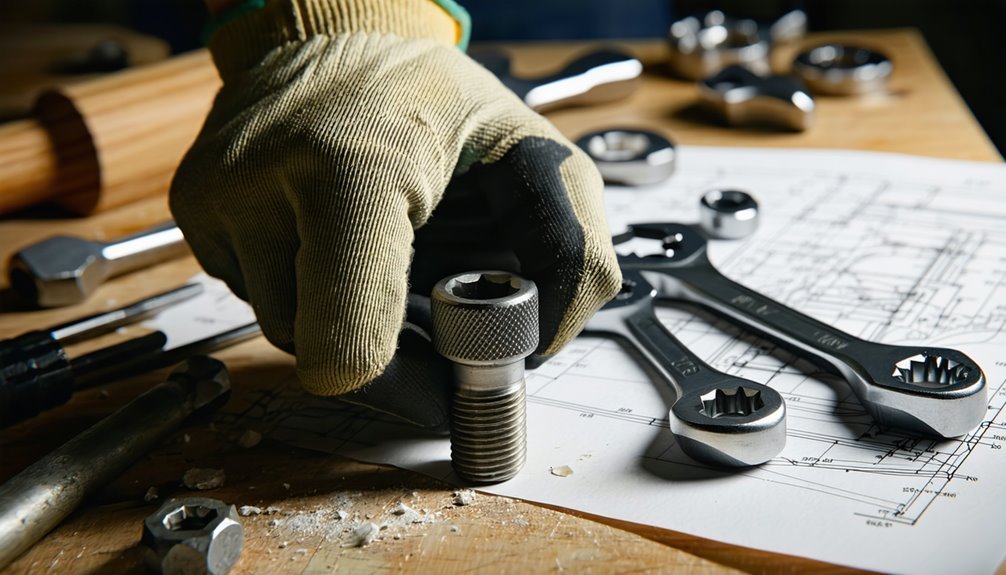
To prevent future stripping issues with seat bolts, it is essential to apply the right amount of torque during installation. Over-tightening can lead to significant damage, while under-tightening may cause the bolt to loosen. Follow these guidelines for effective bolt maintenance:
- Use a Torque Wrench: This guarantees you apply the correct torque specified by the manufacturer.
- Store Tools Properly: Keep your tools in a clean, dry place to prevent rust and guarantee they function correctly.
- Inspect Bolts Regularly: Check for wear and tear, and replace any damaged bolts to maintain safety and integrity.
When to Call a Professional
If you're facing persistent issues with a stripped seat bolt socket despite your best efforts, it might be time to contemplate calling a professional. Attempting to fix it without the right tools or skills can lead to further damage or safety hazards. If you've tried various methods—like using extraction tools or applying penetrating oil—and nothing seems to work, seeking expert consultation is advisable. Professional services can provide the specialized equipment and experience necessary to safely remove the stripped bolt without compromising surrounding components. This is especially significant if the bolt is in a sensitive area, as improper handling could result in injury or additional repair costs. Don't hesitate to reach out for assistance when needed.
Frequently Asked Questions
Can I Use a Regular Socket on a Stripped Bolt?
Using a regular socket on a stripped bolt isn't advisable. You'd be better off exploring stripped bolt solutions like extractor kits or socket alternatives designed specifically for damaged fasteners, ensuring safety and effectiveness during your repair.
What if the Bolt Is Rusted in Place?
If the bolt's rusted in place, consider using rust removal methods like penetrating oil. Apply lubrication techniques effectively to reduce friction, ensuring safety while attempting to loosen the bolt without damaging surrounding components.
How Can I Prevent Damaging Surrounding Components?
About 30% of DIY enthusiasts damage surrounding components during bolt extraction. To prevent this, use protective tools like rubber mats or shields, and apply controlled pressure to minimize risks while safely removing stubborn bolts without collateral damage.
Is It Safe to Heat the Bolt?
Applying heat to the bolt can cause expansion, making it easier to remove. However, make certain you protect surrounding components, as excessive heat may damage them. Always prioritize safety by using appropriate personal protective equipment during this process.
What Are Signs of a Severely Damaged Bolt?
When a bolt's integrity falters, it's like a ship taking on water. Signs of severe damage include visible rust, cracks, or excessive wear. Employing proper repair techniques is essential to guarantee safety and functionality.


